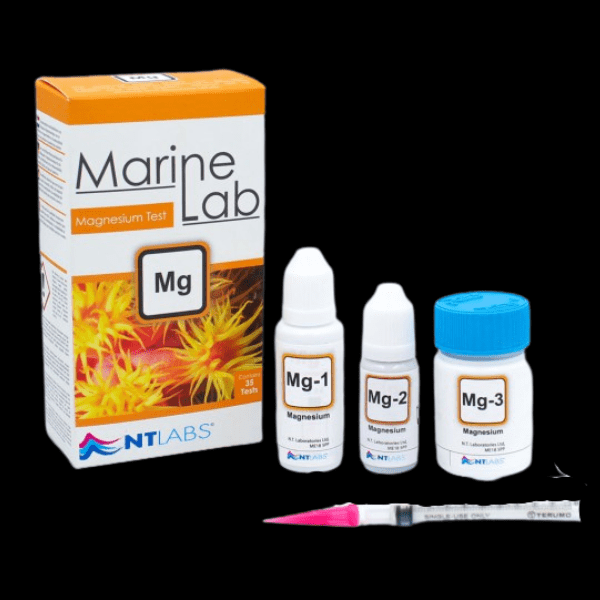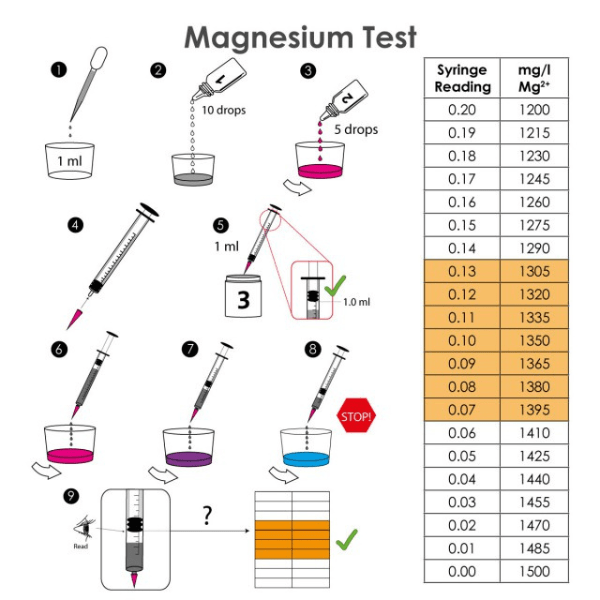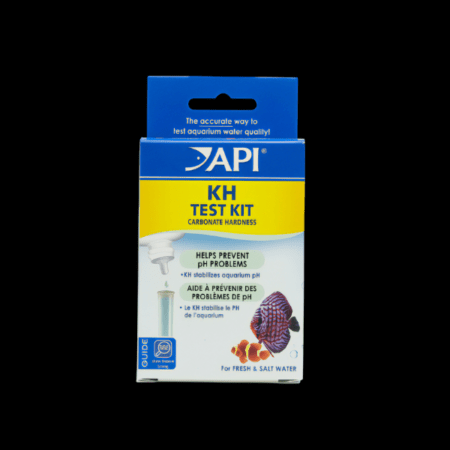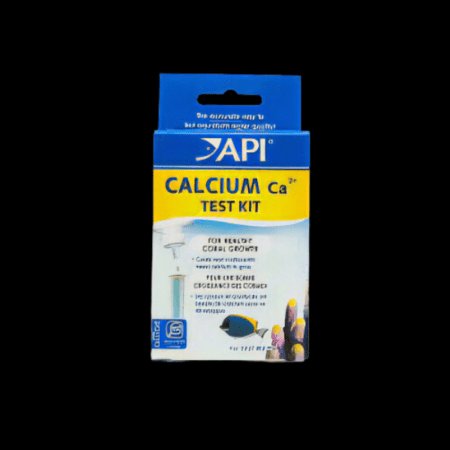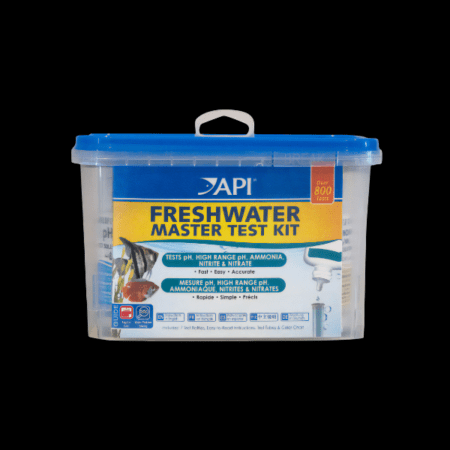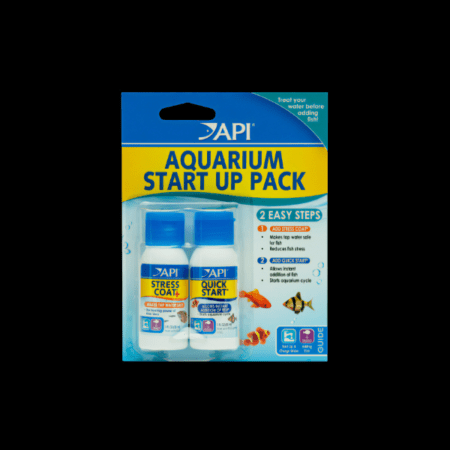Description
NT Labs Marine Lab Magnesium Test
What is magnesium?
Magnesium is the second-most abundant cation found in natural seawater. Magnesium is essential for the efficient assimilation of calcium by marine invertebrates.
Why test for magnesium?
Without the correct levels of magnesium, corals and invertebrates cannot properly or efficiently utilise calcium for the formation of their shells and growth of skeletons. Sufficient magnesium also prevents precipitation of calcium and carbonate ions, ensuring bioavailable calcium and a pH stabilising effect. As magnesium tends to deplete with the age of the water, monitoring the magnesium frequently is the only reliable method to determine the concentration present in the water.
What is the correct level of magnesium?
The average magnesium level in natural seawater is 1300-1400 mg/l. Equally importantly, the correct ratio between magnesium and calcium should be achieved. The concentration of magnesium should be 3 times that of calcium (e.g. a magnesium to calcium of 3:1).
What to do if the magnesium level is wrong?
If the magnesium concentration in your aquarium is wrong, partial water changes using a good quality reef salt is recommend to help re-establish the correct magnesium concentration. It is also important to check the calcium and KH as the three are correlated. If the magnesium is incorrect, calcium and KH are also likely to be wrong.
How to test for magnesium?
- Use the 1 ml pipette provided to measure 1 ml of water to be tested into the titration vessel
- Add 10 drops of Mg-1 reagent. The sample will turn cloudy.
- Add 5 drops of Mg-2 reagent to turn the sample pink in colour.
- Attach the titration tip to the 1 ml syringe provided.
- Draw up 1 ml of Mg-3 so that the bottom of the plunger is at the 1.0 ml mark. It is normal for there to be an air bubble below the plunger and this does not need to be removed.
- Slowly dispense from the syringe into the titration vessel while swirling to ensure proper mixing
- Keep dispensing from the syringe. Slow down when the colour of the solution changes from pink to purple.
- Stop dispensing from the syringe when the solution changes to blue without a hint of purple.
- Read the syringe, noting the value indicated by the bottom of the plunger (not the level of the liquid). Look up this value on the chart to determine the calcium concentration in mg/l (as Mg2+).
N.B. To avoid cross-contaminating the titrating reagent (Mg-3), do not return the small quantity of the titrant left in the syringe back into the bottle at the end of the test. After use, clean and dry the syringe, tip and titration vessel with mineral-free water (such as RO water, if available) to ensure the accuracy of subsequent tests

